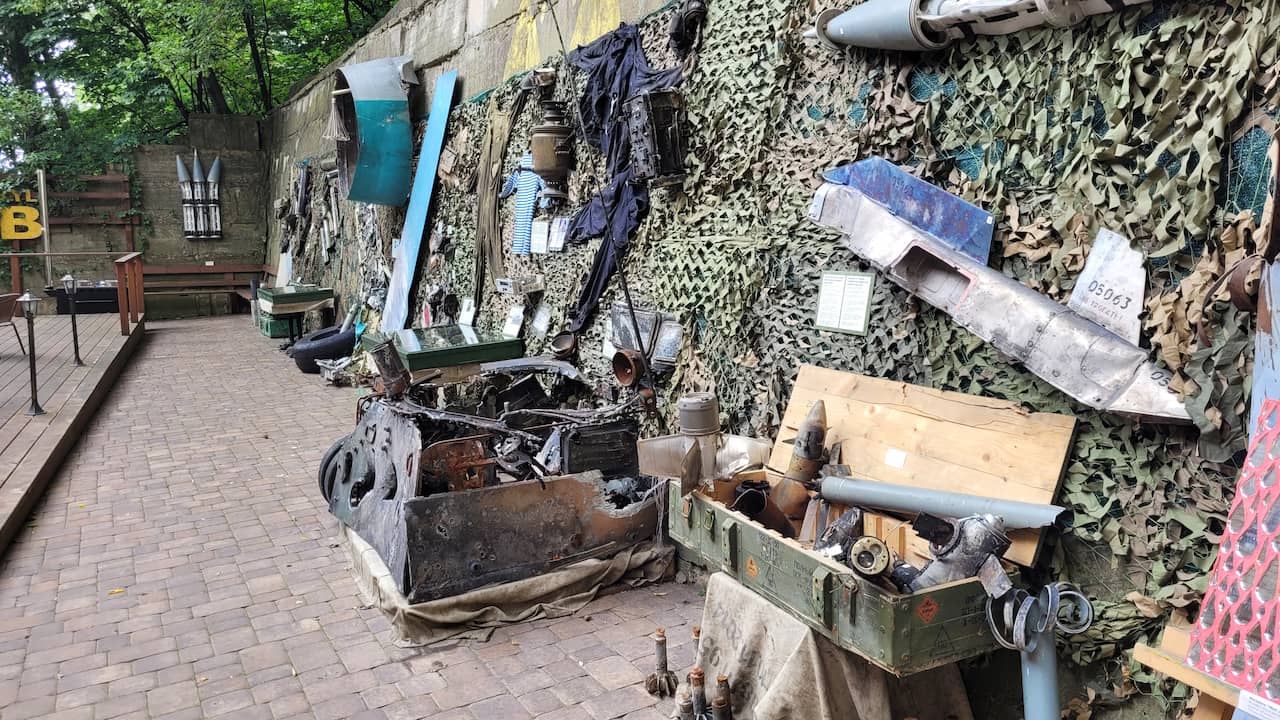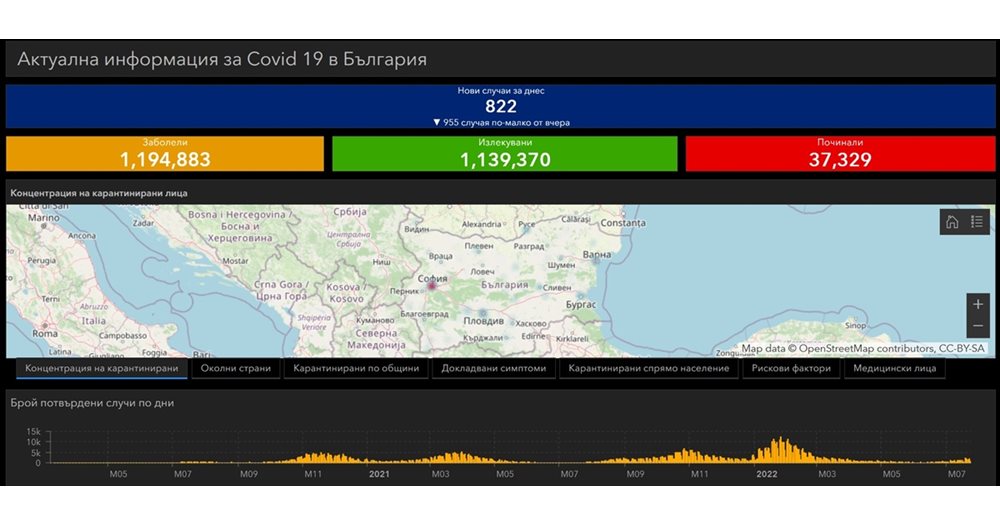War reporter Hans Jaap Melissen tells the story of the people behind the war for NU.nl. Today: the tourist tours to the nuclear power plant in Chernobyl, and even to the front of Ukraine.
Whoever walks into the garden at Chernobyl Tour, in the center of Kyiv, immediately knows how the flag hangs. It does not hang, but lies on the floor. And is Russian. You have to walk over it to reach the war exhibition garden.
Chernobyl Tour is no longer solely concerned with the 1986 nuclear power plant disaster. Today’s war is also interesting for tourists. “We have already received requests from Ukraine and abroad for tours to Chernobyl. Because of 1986, but also because of the new historical layer that has come over it. We are in talks with the government if we can offer our tours again soon,” says Yaroslav Yemelianenko, director of the tour company, which he runs with his wife Kateryna Aslamova.
The Chernobyl plant was in the hands of the Russians for a month after the Russian invasion this year. Now Yemelianenko wants this story to be told too. “I have already asked the authorities if they want to keep some trenches open. We also ask them not to remove all Russian tanks and other equipment that is shot to pieces. People would like to see that.”
“The complicated thing is that we now have not only our normal point of contact with the government, but also the Ukrainian army with whom we have to negotiate,” Yemelianenko continues. He claims to have already received a thousand requests for a tour, from Poland, Great Britain and the Netherlands, among others. “Often from people who have already been to Chernobyl, but now also want to see that other story up close. But then there must be air traffic to our country again. Although some are willing to come by train. Others are waiting until flights are resumed.”
Yaroslav Yemelianenko and Kateryna Aslamova van Tsjernobyl Tour.
Yaroslav Yemelianenko and Kateryna Aslamova van Tsjernobyl Tour. Photo: NU.nl
–
–
–
Chernobyl Tour accused of disaster tourism
In the meantime, it is even possible to go to active war zones. “We’ve actually been doing that since 2015. Then you could go to Eastern Ukraine if you bought military equipment for our army for a certain amount. As a tour organization, we wanted to be paid at most for the transport there.”
The eastern front line was in place in 2015, but the war is now much more in flux. Yet you can now also go to one of the fronts. “It will cost you $3,000 to spend on bulletproof vests, ammunition or other stuff. The military comes with a wish list. And then you can be there for three days, but about 30 kilometers from the front line, on the spot where soldiers sleep.” According to the tour director, fifteen people, from Canada, the United States and Poland, among others, have done this since February.
“It has shifted from just a tragedy to a place where a victory over disaster has taken place.”
Yaroslav Yemelianenko, directeur Tsjernobyl Tour
–
–
–
His wife Aslamova acknowledges that the company is regularly accused of fueling disaster tourism. But according to her, you have to see it differently. “On the Chernobyl tours, we use local guides who worked there in ’86 as an employee, or as someone who had to help get the plant under control. For those people it’s just a way to achieve emotional healing.”
Yemelianenko also believes that they have helped change the negative narrative surrounding Chernobyl. “It has moved from just a tragedy to a place where a victory over the disaster has taken place. We showed the world what has been done to get everything back to normal. That it is safe there again.”
Tour to Bucha ‘way too tragic’
But will the company also offer tours to Bucha, for example, where the Russians have caused a massacre among the population? “No, not so soon. Far too tragic. I see more of a local person from Bucha doing this. And then we could possibly work with them,” says Yemelianenko.
“Ultimately, the residents of Bucha should not feel like victims, but survivors. They should turn their terrible experience into something they can move on. Also this tragedy, this war, must be followed by psychological healing.” According to him, tourism could help with that.
“As long as the stories are told by the generation that lived through it. Just like we do at Chernobyl.”
–


